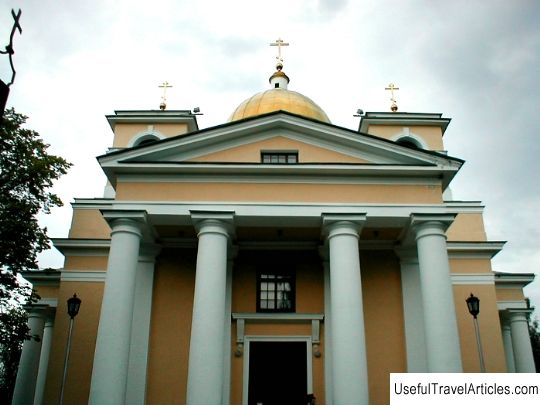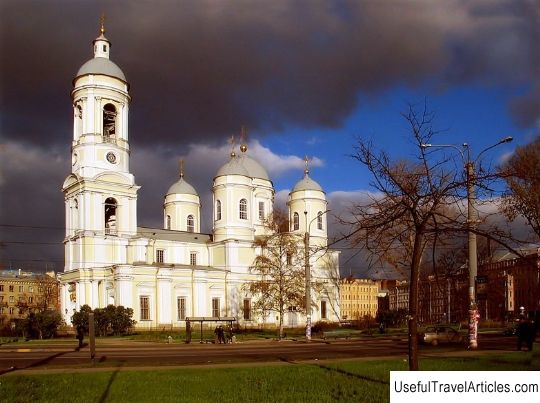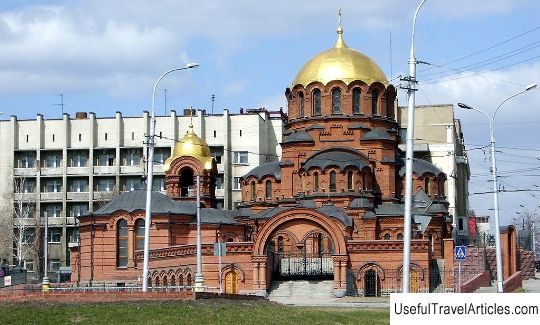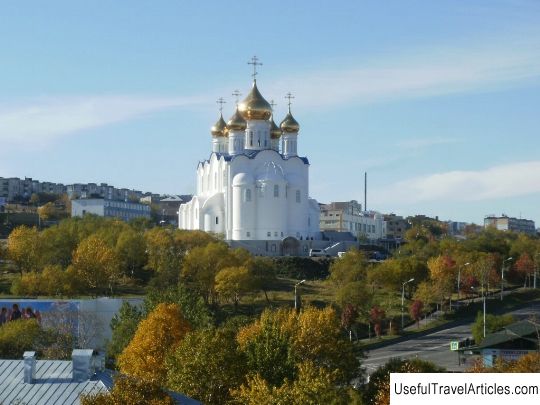Trinity Cathedral of the Alexander Nevsky Lavra description and photos - Russia - St. Petersburg: St. Petersburg
Rating: 8,6/10 (6854 votes) 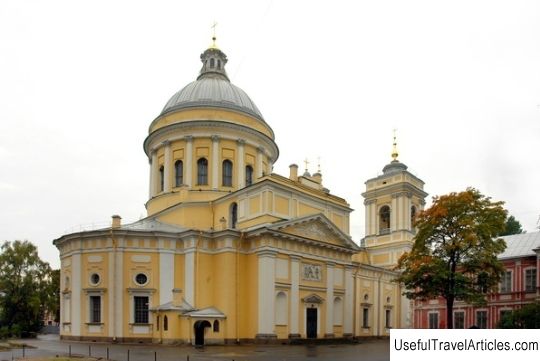
Trinity Cathedral of the Alexander Nevsky Lavra description and photos - Russia - St. Petersburg: St. Petersburg. Detailed information about the attraction. Description, photos and a map showing the nearest significant objects. Photo and descriptionTrinity Cathedral is the cathedral church of the Alexander Nevsky Lavra in the city of St. Petersburg. In 1776, Catherine II approved the project of the temple, created by the architect I.E. Starov, and appointed him construction manager. The solemn laying of the cathedral was made in 1778 by Metropolitan Gabriel (Petrov). In 1782, chimes were installed on one of the two two-tiered bell towers. A bell weighing 13 tons was hung on another tower. In 1786, the cathedral was completed on a rough basis. In 1790, on the day of the Holy Prince Alexander Nevsky, the Trinity Cathedral was consecrated by Metropolitan Gabriel. On the same day, the relics of the blessed Prince Alexander Nevsky were transferred from the Annunciation Church to the cathedral under cannon shots. In 1847 hot-air heating was installed here, and they began to serve in the cathedral in winter. In 1922, the cathedral lost a large number of decorations and utensils. In 1933, the temple was closed and adapted for the House of Wonders and Technological Achievements. In the 1940s, it housed the housing administration, the Museum of Urban Sculpture and a warehouse. Only in 1956 the cathedral was returned to believers. In 1957-1960 and 1986-1988, the cathedral was restored. Today the Trinity Cathedral is in excellent condition, protected by the state. The Trinity Cathedral is a one-domed church with 2 two-tier bell towers. The architectural style is early classicism. The inner cathedral space is cruciform in plan. Massive pylons supporting the vaults divide it into 3 naves. The cathedral is crowned with a dome on a high drum. The overall composition is complemented by 2 monumental bell towers. They rise along the sides of the loggia of the central entrance, which is decorated with a portico of 6 columns of the Roman-Doric order. The facades are treated with shallow panels and pilasters. Above the northern and southern entrances are bas-relief panels depicting events from the Old and New Testaments. The sculptor is F.I. Shubin. Above the main entrance - "The Sacrifice of King Solomon on the Day of the Consecration of the Jerusalem Temple", below you can see a sculptural ensemble depicting angels with the Order of the Order of the Holy Prince Alexander Nevsky. Inside, the building combines two forms: basilical and cross-domed. In the plan - a Latin cross. Corinthian columns with gilded capitals adorn the main nave. The drum supporting the dome contains 16 windows, through which the main illumination of the temple occurs. The iconostasis is a semicircular niche with the royal gates in the back. Made of Italian A. Pinketti white marble. The bronze details were made by P.P. Azhi, the images in the royal doors were painted by I.A. Akimov and J. Mettenlater. In the creation of the remaining images of the iconostasis, G.I. Ugryumov. In the sails, you can see the images of 4 evangelists, made by J. Mettenleiter. The original interior painting was performed by F.D. Danilov. But soon it was partially lost due to the long absence of heating in the cathedral, and therefore in 1806 the painting was replaced by another. It was created by A. della Giacomo based on sketches by D. Quarenghi. In 1862, the vaults of the cathedral were painted again. This was done by P.S. Titov, using sketches by F.G. Solntseva. D. Fontana and F. Lamoni were involved in the modeling; the statues of saints and 20 bas-reliefs were made by the sculptor F.I. Shubin. A marble bas-relief of Metropolitan Gabriel (now in the Russian Museum) was installed in the western zone of the cathedral. In the altar, behind the altar, was placed the image of the Annunciation of the Virgin, made by R. Mengs. On the eastern wall is the painting "The Resurrection of Christ" by P.P. Rubens, above the southern gates - "Blessing Savior" by A. van Dyck. Portrait of Catherine II by D.G. Levitsky, hung over the royal place, opposite was a portrait of Peter the Great. Near the tomb there was a silver lectern with an icon case, where the "reliquaries" with particles of relics and icons were placed. It was presented by Emperor Alexander I in 1806. On the left side of the shrine - the image of the Vladimir Mother of God, on the right - the Savior Not Made by Hands with a particle of the Lord's Robe. In 1862, a malachite canopy for the shroud was delivered to the Trinity Cathedral from the Tauride Palace, which was made in 1827-1828 in Paris in the workshop of P.-F. Tomira (now in the Hermitage). A large chandelier made of silver, weighing about 210 kilograms, was donated by Catherine II. Since the beginning of the 20th century, a custom has been established in the cathedral: every year, on October 25 (November 7), on the day of the death of Pyotr Ilyich Tchaikovsky, to perform the Liturgy of John Zlatoust, created by him for the mixed choir.         We also recommend reading Church of St. Nicholas (Crkva Svetog Nikole) description and photos - Montenegro: Bar Topic: Trinity Cathedral of the Alexander Nevsky Lavra description and photos - Russia - St. Petersburg: St. Petersburg. |
